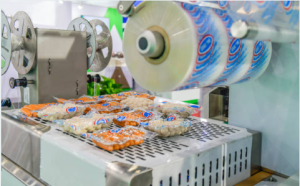Food packaging is a significant market segment in the global food industry, comparable in size to the pharmaceutical industry. More than one-third of all food packaging is made from plastic, and this has expanded over the years to include various plastic materials, copolymers, and additional ingredients. Packaging is crucial to modern society, especially as the food supply chain has become more global.
Plastic packaging helps ensure that the food reaching consumers is safe to eat by protecting it from light, humidity, oxygen, foreign compounds, mechanical influences, and microbial contamination, all of which improve the food’s shelf life. Polypropylene and polyethylene are two polymers frequently used in food packaging, with the latter appearing in various forms, such as low-density polyethylene (LDPE), linear low-density polyethylene (LLDPE), and high-density polyethylene (HDPE).
However, there are growing concerns about chemical contamination from plastic packaging itself. Food contact migration is one of the largest sources of food contamination and is about 100-1000 times higher than that caused by pesticide residues. This migration can come from different sources, such as contact with the internal face of the packaging, diffusion and partition processes within multi-layered plastics, or even adhesives. The possible health implications of plastic contamination to the consumer have led to the control and supervision of plastic materials in different countries. For instance, the European Union has imposed Regulation EU 10/2011, establishing specific rules for safe plastic materials for food packaging and lists specific compounds authorized for plastic formulations and manufacturing. However, this regulation does not consider non-intentionally added substances (NIAS), which may be introduced through various processes, such as the interaction between ingredients, material component degradation, or impurities within the raw material. Therefore, the migration of non-authorized substances must not exceed a level of 0.01 mg/kg of food or simulant.
Contact us for more information

